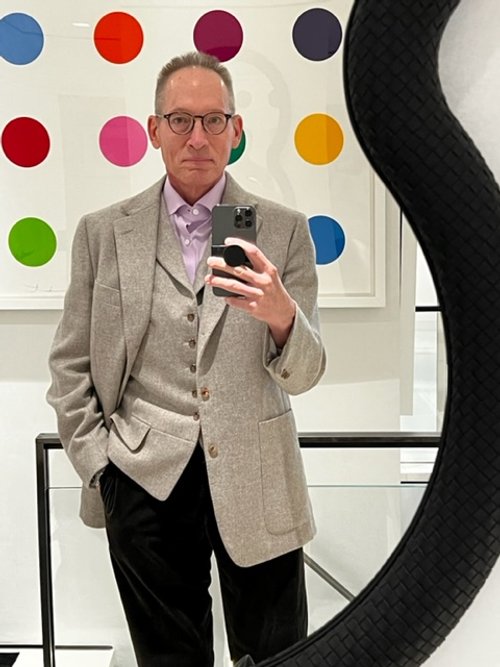Clothes with deep meaning, rooted in personal values: Anthony Peck Q&A
Anthony Peck – son of the late, great actor, Gregory Peck – explains how his father taught him to appreciate expert craftsmanship. “My father was a lifelong client of Huntsman Savile Row,” says Anthony, “I understood the commitment to excellence, the striving for perfection.”
Bespoke jacket and waistcoat, hand-tailored by Dario Carnera, Head Cutter at Huntsman of Savile Row, in Tengri's Khangai limited-edition coating fabric in rare silver.
Clothes with deep meaning, rooted in personal values
At Tengri, we believe clothes are much more than just something to wear. Creating fabrics with meaning and purpose, so they have a long-lasting positive impact, is at the heart of the Tengri Way.
This philosophy is shared by Anthony Peck, son of the late, great actor, Gregory Peck. Here, Anthony explains how his father taught him to appreciate expert craftsmanship, and how his appreciation of Savile Row tailoring has influenced his choice of clothing – garments that are made to last for generations.
How did you learn about the importance of craftsmanship in the creation of clothing?
My father was a lifelong client of Huntsman, a Savile Row tailor, and taught me from a very early age to appreciate craft and technique. So I grew up with a deep appreciation for craft in any art form, sport or endeavour. This meant I understood the commitment to excellence, the striving for perfection it takes to be world class, all of which are embodied in the work of Huntsman and Tengri.
What does this mean to you when you’re wearing a particular piece of clothing?
I wear my garments filled with respect and admiration for everything that has gone into creating them. That means the maker, their commitment and the craft that goes into making the cloth at Tengri. And it means respect for my father and his appreciation of craftsmanship, Huntsman and the centuries-old tradition of striving for perfection, as well as my own relationship to these ideas.
How did you discover Tengri fabrics?
Huntsman posted a photo on social media of a client wearing an absolutely magnificent sports coat in Tengri’s plum-coloured jacketing fabric. I was bowled over by the colour and the fabric – I saw immediately the beautiful drape this cloth allows. Moreover, I could see very clearly the superior craftsmanship that went into producing the cloth, so I immediately wrote to Huntsman asking about it.
What made the most sense, however, was Tengri’s commitment to the families of herders in Mongolia. I could see Nancy’s compassion and emotional commitment to these fine people, and everything in Tengri stems from that commitment.
What has been your experience of Tengri fabrics?
My jacket and waistcoat were hand-tailored by Dario Carnera, the Head Cutter at Huntsman. They're made of the rare silver-coloured fabric in a coating weight of 550gsm. Ordinarily, that sort of weight would be considered a heavy fabric – typically for wearing outdoors – but the properties of the Tengri fabric mean it can be worn in all sorts of different environments, indoors and outdoors.
I discovered just how adaptable the fabric is on the first occasion I wore my jacket and waistcoat tailored by Huntsman with Tengri cloth. We live in Colorado and the winters are cold. I wore the jacket and waistcoat one evening when we walked into town to meet some friends for dinner. The temperature was -9°C (16°F) but I was toasty warm throughout that brief walk. I was expecting the jacket and waistcoat combination to be too warm inside the restaurant, but this was not the case. I felt perfectly comfortable throughout the evening, wearing both jacket and waistcoat – the thermal-regulating properties of this yak fabric are truly wondrous. I love the cloth so much that I’ve reserved a length of the plum colour for another jacket and waistcoat.
What attracted you to Tengri’s approach to making fabric?
There is so much that is close to my heart about Tengri. The sustainability aspect is profoundly important to me. Not just in terms of how the fibres are sourced sustainably, but also how the fabric is made to last. We need to encourage owning clothes not for just one season but for multiple years and generations – making more considered investments in our clothing, choosing cross-seasonal materials and timeless cuts. Wearing my father’s clothes is one of my greatest pleasures. It’s as close as I can get to him.



